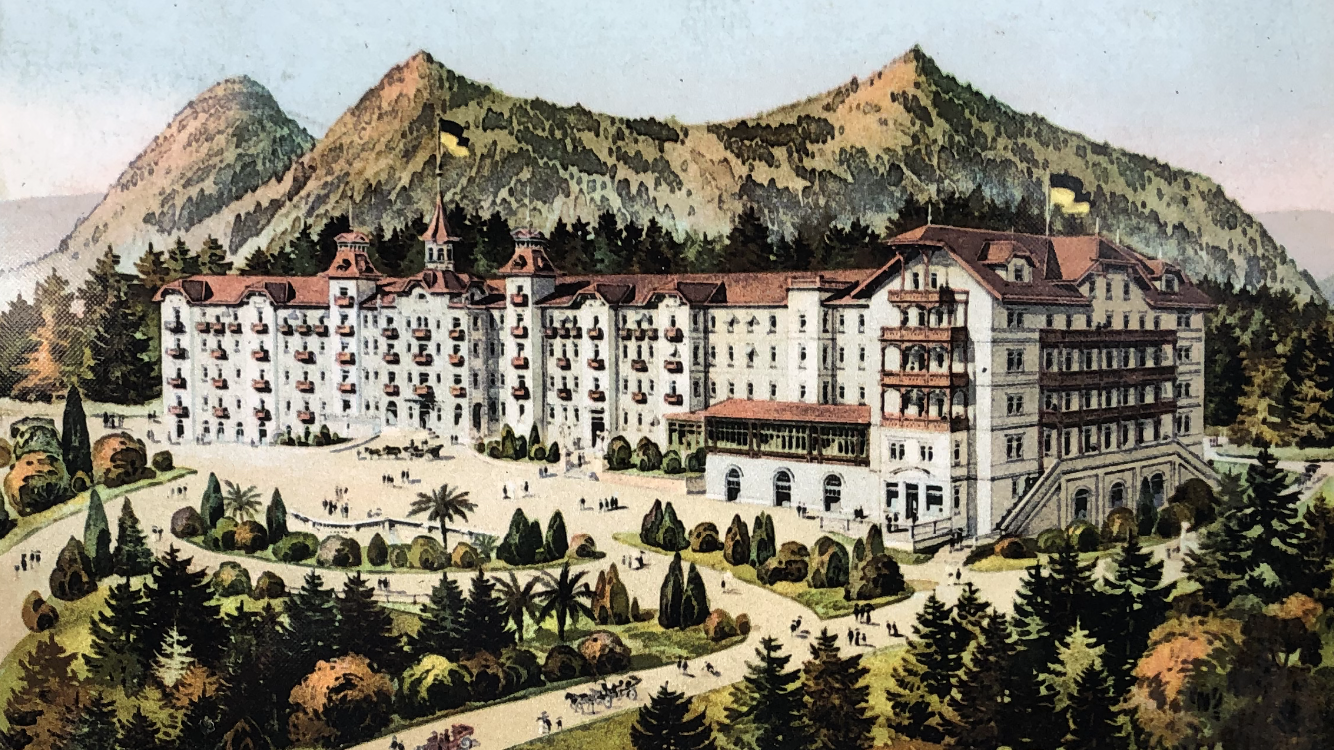 Grandhotel Panhaus Semmering, 1888, Austria
Grandhotel Panhaus Semmering, 1888, Austria
Flowers (Not) Worthy of Paradise
For a detailed handout please click here.
“Look within the creole garden, you put all species on this tiny lick of land: avocados, lemons, yams, sugarcanes… plus thirty or forty other species on this bit of land that doesn’t go more than fifty feet up on the side of the hill, they protect each other. In the big circle, everything is put into everything. He who finds the strength to mix has the strength to find.”
Edouard Glissant cited in LOICHOT, V: Orphan Narratives: The Postplantation Literature of Faulkner, Glissant, Morrison, and Saint-John Perse. Charlottesville: University of Virginia Press, 2007, p. 149.
On their journey across the ocean, the African slaves lost everything – languages, Gods, songs, familiar objects, sacred places – and all they had left were traces. When they arrived at the other side of the Atlantic, they faced treacherous conditions and famished. Very soon, the enslaved started small, clandestine gardens, known as the Creole Gardens. They grew them in secrecy at night after they finished their work on the plantations. The gardens were usually placed in very narrow spaces in which they succeeded to cultivate coconuts, yams, oranges, pines, sweet potatoes, cassava, dozens of different crops and scents. It was their invention. The plants mutually protected each other, employing the rhizomatic concept of planting that Edouard Glissant calls the principle of (horizontal) distribution. The enslaved had science and knowledge. The Creole Gardens were one essential element that helped them survive.
The Creole gardens are not an exception. These gardens contain knowledge that came about as a form of resistance and resilience, as an answer to colonial barbarism and acculturation. This form of knowledge counters the representative, imperial form of gardens that feature so prominently in the Western imaginary. These imperial gardens are riven with ambivalences that stem from questions asking: whose labour is exploited to maintain them as sites of nourishment and enjoyment; who is displaced and whose land is occupied? The enslaved and the labourers remain cast out of the Euro-Christian garden of ‘earthly delights’, even if it is precisely their knowledge and labour in the real garden that feeds and sustains this symbolic garden. (Gray and Sheikh, 2018)
Another view on the meaning of the garden brings us back to 1969, at the psychiatric hospital of Blida-Joinville in Algeria, where the anti-colonial and revolutionary thinker, writer and psychiatrist, Frantz Fanon worked and where patients created the garden as part of the process of occupational therapy and healing. Fanon showed unique enthusiasm towards the use of the garden, botany and architecture as ground and space to nurture for therapeutic ends.
Departing from the idea of the ‘creole garden’ and looking for other examples of counter-gardening, in this Studio Project: Flowers (Not) Worthy of Paradise, we will look at different forms of property, soil and cultivation as an entry point for a conversation connecting history to the present and touching upon issues of liberation through care, architecture, revolution planting, and repair. Flowers (Not) Worthy of Paradise draws on radical forms of pedagogy (teaching) and psychoanalysis in relation to gardening and architecture as tools for unlearning, exploring how institutionally engineered norms and values might govern our imagination. By looking at the garden as a space of resilience (nourishing), as well as a space of healing and surviving, we will reflect on (condemnation) how colonial barbarism, acculturation and epistemic violence (G. Spivak) perpetrated by colonial institutions—produces creation from destruction. We will explore different property forms, soil and cultivation as an entry point for a conversation by employing various devices, such as drawing, photography, archiving, mapping, and site writing. We will use these devices to create a methodology that will enable us to find the (spatial) articulation of the meaning of gardening in relation to trauma, fear, the continuous year-long lockdown. Our aim is also to instigate a process of healing and repair.
[1] Frantz Fanon, revolutionary thinker, writer and psychiatrist
Research material and methodology:
Guest lectures, talks, interviews, film and video screenings, reading groups, designing, gardening, digging and walking. Students are encouraged to blur the boundaries between diverse modes of knowledge production and practice. The Master Studio Project Flowers (Not) Worthy of Paradise explore the potentials of artistic involvement and collaboration with renowned, artists, curators, theorists and partners.
The master studio project will be divided into four parts: (1) research (art-based research, gardening and botany survey while reading, screening, and discussing); (2) presentation of the research sample. (3) production (film making, gardening, exhibition concept development and other forms, yet to be discovered, and (4) curatorial design (Kuehn, 2016), a preparation for the exhibition and final presentation at the exhibiting space Annenstrasse 53, in collaboration with the Verein Das Gesellschaftliche Ding. Kunst, Architektur und Gesellschaft, Springerin (Magazine) and Art in Public Space Niederösterreich, in the larger framework of the international exhibition “Land, Property and Commons” curated by Hedwig Saxenhuber (curator, Springerin magazine, editor in chief).
Studio spaces: IZK Online Teaching / IZK Research Space / outdoor fieldwork / exhibiting space Annenstrasse 53,
Studio times: sessions Wednesday, Thursday 11:00 – 16:00; dates after the Easter break subject to change in discussion with students
Working sessions throughout the studio with invited guests:
Andreas Goritschnig, architect, Breath Earth Collective
Wilfried Kühn, KuehnMalvezzi architects
Hila Peleg, curator and writer HKW Berlin
Atelier „le balto“, landscape architects and artists
Nina Krajnik, psychoanalyst and philosopher, Slovenian Association of Lacanian Psychanalysis, Ljubljana
Shela Sheikh, lecturer Goldsmiths University of London
Jumana Mana, artist
Maria Puig de la Bellacasa, associate professor, University of Warwick
Virginia Black, architect f-architecture
Secil Binboga, architectural historian
Mohammed Bouroussia, artists
Siri Black, artist and researcher
Philipp Sattler, artist, researcher and writer
A detailed syllabus, time plan, materials and references for the Master Studio Project will be published after the first session on 10th March.